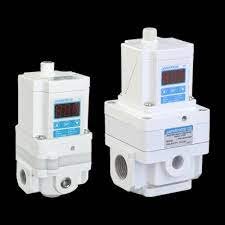Pressure regulators control how hard a gas or liquid pushes inside a pipe or tube. Think of them like faucets for pressure. Some regulators work by hand. Others use small motors and electronics. This article explains the differences in simple words and shows when to use each one.
What is a manual pressure regulator?
A manual regulator uses a knob or screw. You turn it and set the pressure. It holds that pressure until you change it. People use manual regulators when they want a simple and low-cost option. A manual regulator does not need electricity. It works by springs and valves. You can see and feel the change with your hand.
What is an electric regulator?
An electric regulator uses sensors and small motors. It reads the pressure and adjusts itself. This kind of device can change pressure automatically and fast. One common type is the electronic proportional pressure regulator. It changes pressure in small steps so the flow stays steady. The electronic pressure regulator lets machines interact with the regulator. A computer or controller can request an increase or decrease in pressure.
How they both work
Manual
- Turn the knob to set pressure.
- A spring pushes against a valve.
- The valve opens or closes to keep the set pressure.
Electric
- A sensor reads the real pressure.
- The controller compares the reading to the target.
- A motor or solenoid moves the valve until the pressure matches the target.
Key differences you can feel
- Control: The Manual needs a person to change it. Electric changes by itself.
- Speed: Electric reacts faster to changes in the system.
- Cost: Manual costs less at first. Electricity can cost more, but it can save money in some uses.
- Precision: Electric gives finer control. A proportional pressure regulator changes pressure smoothly.
- Power: Manual works without power. Electric needs electricity.
Where to use each one
Use a manual regulator when:
- You need a low-cost and easy fix.
- Pressure does not need to change often.
- You work where electricity is not safe or not available.
Use an electric regulator when:
- Machines need exact pressure all the time.
- You want automatic adjustments or remote control.
- You need fast changes or repeatable results.
If a factory robot or a test machine needs very steady pressure, you will likely see an electronic proportional pressure regulator. In systems that use both air and electronics, the regulator is often called an electro pneumatic regulator. This means it uses electrical signals to control air-powered (pneumatic) components.
A short guide to pick one
- Ask how precise the pressure must be.
- Ask how fast the pressure must change.
- Ask if a person will always be nearby to adjust it.
- Check if power is available.
If you need high precision and remote control, choose an electronic proportional pressure regulator. If you need a simple and cheap solution, pick a manual regulator.
Wrap up
Manual and electric regulators do the same job of holding pressure, but they go about it in different ways. Manual regulators give simple and reliable control by hand. Whereas electronic regulators provide automatic and smoother pressure to the machines. So, the right selection between these two depends on the following things:
- How fast do you want the regulator to achieve the target
- What is your budget for buying and maintenance for regulators
- How much smoother the pressure you want
So, read the above article to choose the best regulator according to your project.


